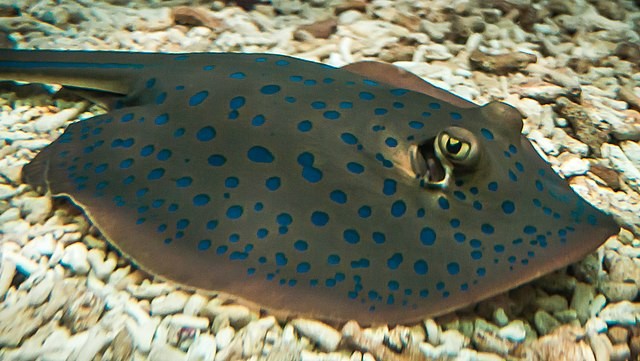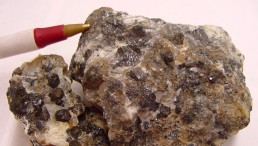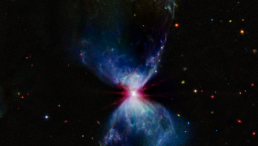Scientists have found the unique nanostructures that cause the electric blue spots on the blue-spotted ribbontail ray (Taeniura lemma). This shows that chemical-free color technology could be used in new ways.

(Photo: WikimediaCommons/Julia Sumangil)
The Science Behind the Ray's Blue Coloration
Scientists have long been interested in the bright blue spots of the blue-spotted ribbon tail ray. Pigments get their color from chemical substances, while these blue spots come from complex nanostructures.
Professor Mason, Dean of Comparative Anatomy at City University of Hong Kong (CityU), says that if blue is seen in nature, it is probably caused by tissue nanostructures rather than pigment. You must look into more than just optical science to understand these structural colors. You also need to look into the materials and how they are organized in tissues.
"Ribbontail Stingray Skin Employs a Core-Shell Photonic Glass Ultrastructure to Make Blue Structural Color," published in the journal Novel Optical Materials, is a study that used several novel imaging methods. Micro-computed tomography (micro-CT), scanning electron microscopy (SEM), and transmission electron microscopy (TEM) were used to examine the structure of the skin in its normal state.
Amar Surapaneni, a postdoc who worked with Dean's group, said that they discovered that the blue color comes from skin cells that are specially designed and have a stable 3D layout of nanoscale spheres that contain reflecting nanocrystals. Because of their size and spacing, these nanostructures, which look like pearls floating in bubble tea, especially reflect blue waves. A thick layer of melanin below the cells that makes color also blocks all other colors, making the blue spots stand out more.
READ ALSO: Novel Method for Metal Nanostructures Possess High Electrocatalytic Ideals for Fuel Cells Efficiency
A Potential for Chemical-free Color Technology
The results are essential for understanding marine life. The team thinks they could be used to make bio-inspired colored materials without chemical pigments.
Dr. Dean said that they are looking for relationships to make biomimetic structurally colored systems that can be changed easily, based on how stingray skin is flexible. These improvements could allow fabrics, flexible displays, screens, and sensors to have safe colors that don't use chemicals.
The bright blue color of the blue-spotted ribbon tail ray is also good for the environment. Blue is better at hiding than other colors in marine settings because it goes deeper.
Dr. Dean says that the bright blue spots on stingrays' skin stay the same color no matter what angle you look at them from. For this reason, they might help the animal blend in better when it swims or moves quickly with its wings flapping.
This discovery also makes it possible to conduct more studies. Dr. Viktoriia Kamska and her team at CityU are looking into why some rays and sharks, like the blue shark (Prionace glauca), are blue. According to early findings, the blue shark's coloration process differs from that of the stingray. This means imaging tools and studies combining optics, materials, and biological sciences are needed.
The discovery that nanostructures help explain the blue color of the blue-spotted ribbon tail ray shows how clever nature is and how it can inspire technological progress. By copying these natural processes, we can make environmentally friendly, chemical-free color systems that can be used in many situations. The ongoing study helps us understand marine life better and opens the door to new ideas in material science and other fields.
RELATED ARTICLE: New Innovative Microscopy Approach Revealing Nanostructures Developed to 'De-Crowd' Molecules in Cells
Check out more news and information on Nanotechnology in Science Times.














